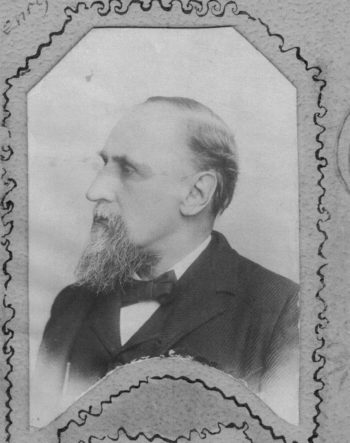
Henry Sabin was a revered leader of rural school improvements in Iowa and across the United States during the late 19th and early 20th centuries. Photo courtesy of Clinton County Historical Society
By William Sherman
In the late 19th and early 20th centuries, perhaps nobody did more to improve rural schools in Iowa and across the nation than did Henry Sabin, whose legacy endures today.
Sabin, born on Oct. 23, 1829, grew up in Connecticut and was educated at Woodstock Academy. He earned a B.A. degree with honors from Amherst College in 1852. He held teaching and principal positions in Connecticut, New Jersey and Illinois before moving to Iowa in August 1871 to become Clinton Superintendent of Schools.
During his tenure in Clinton (1871-1887), the school district experienced growth in buildings (from two to seven), teachers (from 26 to 44), enrolled students (from 1,266 to 2,419) and high school students (from three in 1874 to 20 in 1887). As Carroll Englehardt, a Sabin biographer noted: “…working for a city school system made Sabin and his colleagues the elite of Iowa teachers, most of whom were poorly paid employees of country schools.”
In 1880, Sabin’s annual salary was $1,900 and the average monthly salary of the 44 Clinton teachers was $45. Both amounts were considerably above the state average monthly teaching salary of $26.28 for females and $31.16 for males.
After serving in Clinton, during which time he was president of the Iowa State Teachers Association in 1878, Sabin was elected in 1888 for the first of two terms as Iowa State Superintendent of Public Instruction (1888-1892, 1894-1898). His primary responsibility was to oversee the operation of more than 12,000 ungraded, rural elementary country schools.
TO READ MORE ABOUT THIS STORY AND OTHER FASCINATING STORIES ABOUT IOWA HISTORY, subscribe to Iowa History Journal. You can also purchase back issues at the store.
